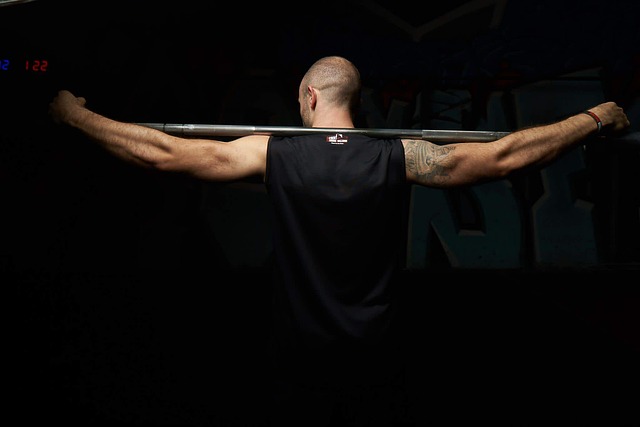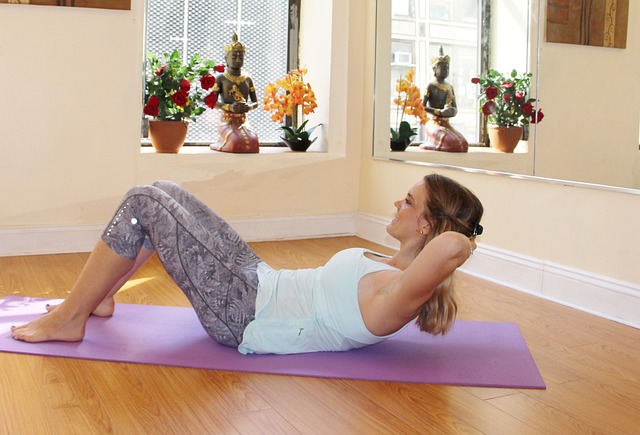Let’s Learn more about the benefits of shoulder mobility exercises, how to include them in your routine, and which moves to try.
Shoulder Mobility Exercises Have Many Advantages: Scratching the middle of your back, reaching for that cereal box on the top shelf in your cabinet, or pulling your dress’s zipper.
Shoulder mobility exercises can help you perform better in everyday life and keep your joints in good shape.
While all joints in your body require mobility, certain joints, such as your thoracic spine, hips, wrists, ankles, and shoulder joints, require more mobility than others.
Mobility exercises can also aid in enhancing joint health and resilience. Joints do not have a blood supply. Thus they acquire their nutrients through movement.
Movement almost flushes your joint, so you get rid of inflammation, and then the fresh fluid that comes to the joint [known as synovial fluid] is what brings the nutrients to nourish it.
What Are the Causes of Limited Shoulder Mobility?
As you age, your muscles lose flexibility, which might reduce your mobility. These tissues must be pliable in order for your joints to move through their whole range of motion. As a result, if you lack flexibility, your mobility may suffer as well.
However, getting older is only one piece of the mobility puzzle. People who have had shoulder injuries, especially if they haven’t fully healed, are more likely to have limited shoulder mobility.

A sedentary lifestyle might also have a negative impact on your shoulder mobility. If all you do is sit, work on a computer, or don’t move very much, the number of times you actually use your shoulders and reach decreases substantially. When it comes to mobility, you either have it, or you don’t.
If none of these risk factors appear to apply to you, shoulder mobility exercises may still be beneficial if you’re experiencing pain throughout the joint, especially when reaching or lifting overhead. It could be a strength issue, but different mobility exercises could allow you to reach overhead safely.
Shoulder Mobility Exercises That Work
Are you ready to start moving more quickly and easily in your daily life? Consider incorporating these shoulder mobility exercises into your wellness routine to enhance strength, stability, and flexibility across the joint and surrounding muscles.
While these exercises can help you get started, if you’re experiencing pain or physical limitations in your shoulder, don’t be afraid to consult with your doctor or a physical therapist for personalized exercises.
How you include these shoulder mobility exercises into your movement practice is entirely dependent on your current level of activity. If you don’t exercise regularly, you could execute these motions as a stand-alone “workout.”
However, if you’re reasonably active, you might benefit from incorporating these exercises into your warm-up or nighttime wind-down routine. The frequency with which these motions should be performed varies from person to person (depending on age, activity level, injury history, and other considerations), but 2 – 3 times per week is usually a safe bet.
Don’t force yourself to push through any pain or discomfort while you practice these moves. Some pain and discomfort are to be expected, especially if you’re just getting started with positions you’ve never tried before or haven’t had much exposure to.
However, everything should always feel secure. You should never be concerned if you are confident in what you are doing.
Thoracic Extender Using a Foam Roller
While this exercise does not directly target your shoulders, it can help improve thoracic spine movement, which can affect shoulder mobility.
A. Lie faceup on the floor, knees bent, feet flat on the ground, and the center of the back, just beneath the shoulder blades, lying perpendicular to the body foam roll. Have your hands behind your head, elbows out to the sides.
B. Extend the upper back as far as it is comfortable over the foam roller toward the floor. Slowly return to your starting position.
Perform 2 sets of 10 reps.
Supine Pull-Over
This exercise improves overhead shoulder flexibility, which might be hampered by lat stiffness. Make [your] grip narrower or wider to work within your existing range of motion, and flip [your] hands over to increase the stretch.
A. Lie faceup on the floor, knees bent, feet flat on the ground, arms extended toward the ceiling squarely in line with shoulders, and an overhand grasp on a PVC pipe in both hands.
B. Keeping your core engaged and your back flat on the floor, slowly lower both arms to the floor above your head as far as you are comfortable. After a brief pause, progressively return to the beginning position.
Perform 2 sets of 10 reps.
Prone YTW
This upper back shoulder mobility exercise tests your shoulder blades’ (aka scapulae) ability to retract (think: pushing the shoulder blades together) and rotate. As a result, “it improves control of your scapulae, which influences shoulder position and ability to reach in different directions,” according to Eleázar.
A. Lie facedown on the floor with your legs extended behind you, toes touching the ground, and arms extended above your head, palms facing each other and forming a “Y” shape with your upper body.
B. Keeping your core engaged, slowly lift both arms off the floor to a comfortable height, stop, and then lower them back to the ground. Perform 5 reps.
C. Lower both arms to your sides, forming a “T” with your body, palms front. Lift both arms as high as comfortable off the floor, pause, and then lower them back to the ground. Perform 5 reps.
D. Keeping your arms at your sides, bend both elbows to 90-degree angles. The upper body should be shaped like a “W.” Lift both arms as high as comfortable off the floor, pause, and then lower them back to the ground. Perform 5 reps.
Prone Swimmers
The scapular and rotator cuff muscles will be targeted in this shoulder mobility exercise. It focuses movement at the shoulders and shoulder blades throughout the majority of the shoulder ranges.
A. Lie facedown on the floor with your legs extended behind you, your toes touching the ground, and your arms extended above your head, palms facing the ground. Bend the elbows fully and place both palms on the upper back, right below the head. The biceps should be placed adjacent to the ears.
B. Lift both elbows off the floor slowly, then extend both arms straight above the head. Then, as if swimming, sweep your arms out and down to meet at your lower back, rotating your shoulders so your palms are facing up at the end of the movement.
C. Pause for a moment, then reverse the movement to return to the starting position.
Perform 2 sets of 10 reps.
Supine Wall Angel
This gravity-assisted shoulder mobility exercise stretches the chest and front of the shoulders by targeting the rotator cuffs, traps, and lats. Stretching and strengthening are used to make the motion.
A. Start by laying on your back on the floor. Have your knees bent and feet flat on the ground. Your arms are stretched directly in line with shoulders, palms facing away from the body.
B. Bend your elbows to 90 degrees and lower both of your arms to the floor. Triceps are resting on the ground at sides parallel to the shoulders, with forearms stretched toward the ceiling. This is your starting point.
C. Hold it for a second or two, then lower forearms to the floor over the shoulders, palms facing up.
D. Pause, then straighten your arms above your head until they are fully stretched.
E. Return to the starting position by slowly reversing each step of the movement. Then, with palms facing the floor, lower forearms to the floor below the shoulders.
Perform 2 sets of 10 reps.

Standing Wall Angel
This shoulder mobility exercise is a more advanced variant of the supine wall angle in that it targets the same muscle groups but requires you to resist gravity, which aids in strength development. You can carry a lightweight during the action, just like the supine variation, to further the strength-building advantages.
A. Stand a few inches away from the wall with your back to the wall. Your knees are slightly bent with your arms resting against the wall and extended toward the floor.
B. Bend your elbows to 90 degrees and raise your arms to your shoulder height. Have Triceps resting against the wall at sides parallel to the shoulders, with forearms extended toward the floor. This is your starting point.
C. Pause, then raise forearms over shoulders to the wall, palms facing forward.
D. Pause, then straighten your arms above your head until they are fully stretched.
E. Return to the starting position by slowly reversing each step of the movement. Then, with palms facing the wall, lower forearms to the wall below the shoulders.
Perform 2 sets of 10 reps.
Serratus Quadratus Push-Up
This shoulder mobility exercise may not appear to be much, but it targets the serratus anterior — the muscle on the side of your ribcage. The key role in shoulder movement aids in protraction (pulling shoulder blades away from the spine) and upward rotation of the scapulae. The main advantage is that it strengthens the protraction motion, which is typically overlooked when people focus on postural exercises.
A. Begin in a table-top position on the floor, hands immediately under shoulders, knees under hips, and toes on the floor. Look down at the ground.
B. Keeping your back flat, core engaged, and arms straight, draw your shoulder blades together, letting your neck drop slightly to the floor.
C. Return to the beginning posture by driving through the palms and spreading the shoulder blades apart.
Perform 2 sets of 10 reps.
Push-Up Into Downward Dog Serratus
After you master the Serratus Quadratus Push-Up, try this movement. This will strengthen the serratus anterior, stretches the lats, and significantly improves the thoracic. It’s a closed-chain weight-bearing upper-body shoulder exercise. This exercise will help you with overhead proprioception.
A. Begin in a high plank position on the floor with your hands just under your shoulders, your legs completely extended with your toes resting on the floor, and your body making a straight line from head to heels. Look down at the ground.
B. Keeping your back flat, core engaged, and arms straight, draw your shoulder blades together, letting your neck drop slightly to the floor.
C. Return to the beginning posture by driving through the palms and spreading the shoulder blades apart.
D. Go into a downward dog position by pressing through the palms and sending the hips back. Return to the starting position by slowly reversing the movement.
Perform 2 sets of 10 reps.
To Conclude
Mobility, in general, is necessary for carrying out daily activities, and completing shoulder mobility exercises, in particular, can assist in making numerous overhead actions less difficult. Just consider brushing your hair.
This activity requires a variety of shoulder movements, including flexion overhead, abduction out to the side, and external rotation to reach the back of the head. Reaching the back of your head will be difficult if any of those precise directions of movement are restricted.
So shoulder mobility exercises can have a significant impact on how well you can get into those positions.

